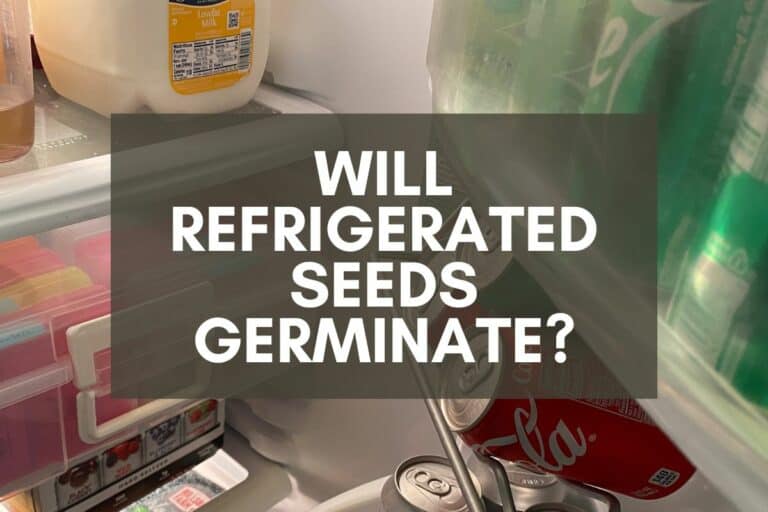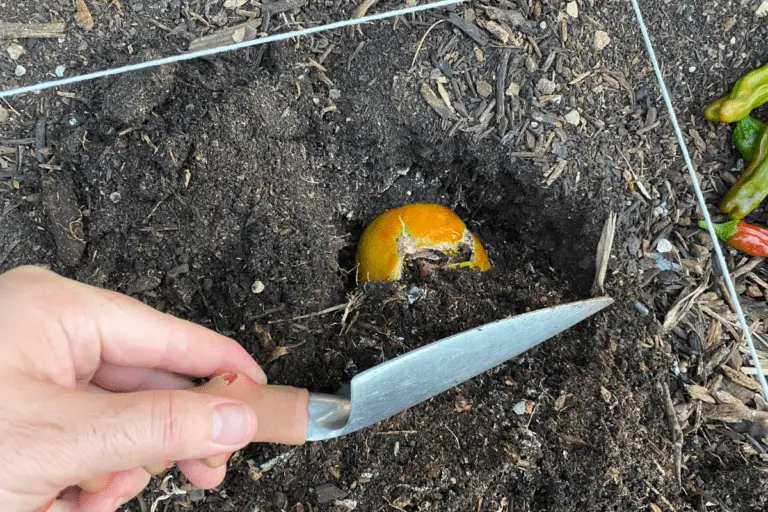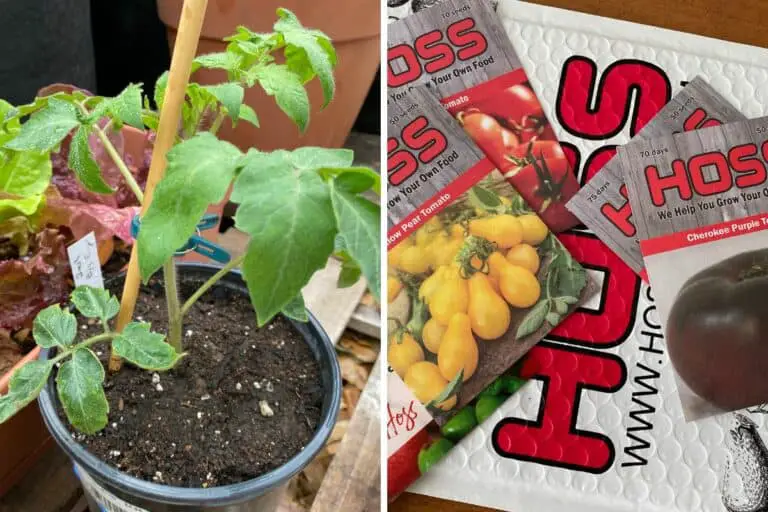Growing Tomatoes from Hybrid Tomato Seeds: Can You Do It?
I love growing tomatoes, especially tomato varieties that you can’t find in stores. Sometimes I’ll purchase heirloom seeds. Other times I’ll buy hybrid seeds.
But many years ago, when I was still a novice gardener, I wondered what would happen if I harvested seeds from a hybrid tomato plant, then planted them the following season.
Would hybrid tomato seeds grow? And if so, would they grow a new hybrid tomato plant?
Seeds harvested from hybrid tomatoes will grow new plants like any other tomato seeds. However, unlike seeds harvested from heirloom varieties (which produce the same kind of plant year after year), seeds from hybrid plants will not reproduce the parent plant but a closely related plant variant.
What I want to do in this article is share all that I’ve learned about harvesting seeds from hybrid tomato plants. To make it as simple as possible, I’ve divided the article into four separate sections:
- Heirloom Tomatoes vs. Hybrid Tomatoes: What’s the Difference?
- Saving Hybrid Tomato Seeds: What You Should Know
- What Happens If You Plant Tomato Seeds from a Hybrid? My Hybrid Experiment
- Hybrid Tomatoes: Are They Better or Worse Than Heirlooms?
When I harvested seeds from my hybrid tomato plant, I had no idea what would happen if I planted them. Would the resulting plant grow well? Would it produce any tomatoes? If so, what would those tomatoes look like, and would they be tasty or bland or somewhere in between?
If you’re ever been curious about what’ll happen when you plant seeds harvested from hybrid tomato plants, then keep reading. You can also skip ahead if you just want to see the results of my experiment.
Heirloom Tomatoes vs. Hybrid Tomatoes: What’s the Difference?
Before we take a look at the results of my hybrid plant seed harvesting experiment, I want to make sure that you know the primary factors that differentiate heirloom tomatoes from hybrid tomatoes.
There’s a lot that could be written about this subject, but I’ll keep things simple by providing a basic overview.
Heirloom Tomatoes
| Pollination | Heirlooms are open-pollinated, meaning they’ve been pollinated naturally by bees, butterflies, moths, wasps, or other pollinators. |
| Genetics | They’re never cross-pollinated, so they maintain their genetic integrity. |
| Heritage | Heirlooms are considered a stable tomato variety, which means they’ve retained their signature characteristics for at least 40 years. |
| Look & Feel | These tomatoes are typically thinner-skinned and thus more prone to cracking. They come in many different colors, shapes, and sizes. |
| Pests & Disease | Heirlooms are typically more susceptible to pest infestations and plant diseases. |
| Commerce | They’re typically unable to travel for long periods of time without the likelihood of damage or rot. |
| Flavor & Taste | Heirlooms are believed to have superior flavor and taste (although these claims are often made without evidence). |
Hybrid Tomatoes
| Pollination | Hybrids are purposefully cross-pollinated, which involves removing part of the flower (since each flower contains both male and female reproductive systems) and transferring pollen from one open-pollinated plant to another open-pollinated plant. |
| Genetics | Hybrid tomatoes are the product of 2 open-pollinated parent plants. As such, hybrid tomato seeds are an amalgamation of genetic material. |
| Heritage | Some hybrid varieties have been around for many years, but new varieties are being created yearly by tomato breeders around the world. |
| Look & Feel | Hybrid tomatoes were once less colorful and had thicker skins than heirlooms, but a new generation of tomato breeders has created all kinds of different hybrids. |
| Pests & Disease | Many hybrids have been bred to be more resistant to pests and various soil-borne diseases. These resistances are typically noted on the seed packets. |
| Commerce | Some hybrid tomatoes can travel long distances since they’ve been bred for that purpose (often at the expense of flavor and taste). |
| Flavor & Taste | Some hybrid tomatoes have great flavors. Many others are rather bland, especially tomatoes found at restaurants and grocery stores. |
One final word about flavor and taste: I’ve researched literally hundreds of hybrid tomato varieties, and I’ve grown many of my own.
When people say that heirloom tomatoes are “better” than hybrids, they might be right. But I’m willing to bet that they haven’t conducted taste test competitions pitting several hundred heirloom varieties against several hundred hybrid varieties.
My advice for tomato lovers is this: Don’t avoid hybrid plants just because they’re hybrids. Figure out which tomato plants grow best in your region (both heirloom and hybrid alike) and grow both.
That way, you’ll be able to do your own taste comparison and determine which plants you like most.

Saving Hybrid Tomato Seeds: What You Should Know
Have you ever considered saving seeds from hybrid tomato plants?
Maybe you’ve decided to grow an Early Girl, Lemon Boy, or San Marzano since you’ve heard that they’re great producers. Or maybe you end up using my link below to take a look at some of Victory Seeds’ dwarf tomato varieties.
Wherever you get your seeds, you’ll have a decision to make once those hybrid plants eventually start producing fruit: Should you save the seeds?
A few years back, I decided to harvest seeds from Kumato tomatoes in the hopes that I would enjoy the outcome (since I had liked the originals).
But as I now know, if you’re thinking about harvesting seeds from hybrid tomatoes, you should answer these 3 questions before doing so:
- Do you have room in your garden for a plant that may or may not produce nice, flavorful tomatoes?
- Do you enjoy experimenting in your garden, whether or not those experiments are successful?
- Do you like surprises, even if the surprise isn’t what you’d hoped for?
If you answered “yes” to these 3 questions, then I think you should save some seeds from a hybrid tomato and plant them next season to see what happens. Here’s why:
Space
If you’ve got room in your garden and don’t mind an additional plant, then saving hybrid seeds could be a fun way to grow a similar (but different) tomato plant.
But if you’re strapped for space–maybe you live in an apartment or have a very small backyard–then I wouldn’t recommend doing so. You need to maximize what little space you have by growing the very best plants possible.
Experiments
If you’re the kind of person who enjoys trying new things–including things that haven’t been tried before–then harvesting seeds from hybrid tomatoes could be a lot of fun.
Since hybrid tomato seeds aren’t stable, they’ll produce a plant that’s unlike the original plant in some way or another. It might look similar and produce similar fruit. Then again, it might not. There’s simply no way to know.
What this means is that you might be growing a one-of-a-kind plant, so as long as you’re willing to experiment, you could be eating a very unique tomato once your plant matures and begins producing fruit. How cool is that!
Surprises
As you’ll see below, my experience harvesting Kumato tomato seeds and growing a new plant was…not ideal. But even though my experience wasn’t all that great, yours could be completely different.
More importantly, I’m the kind of person who enjoys surprises, and although this particular surprise wasn’t what I had hoped for, I enjoyed the fun I had along the way.
Simply put, if you’ve got the space, if you like experiments, and if you enjoy surprises, you should definitely save seeds from your favorite hybrid tomato plants and plant them next year.
You won’t know whether the experiment was a success or not until your tomato plants mature, but no matter what ends up happening, you’ll have fun doing so!
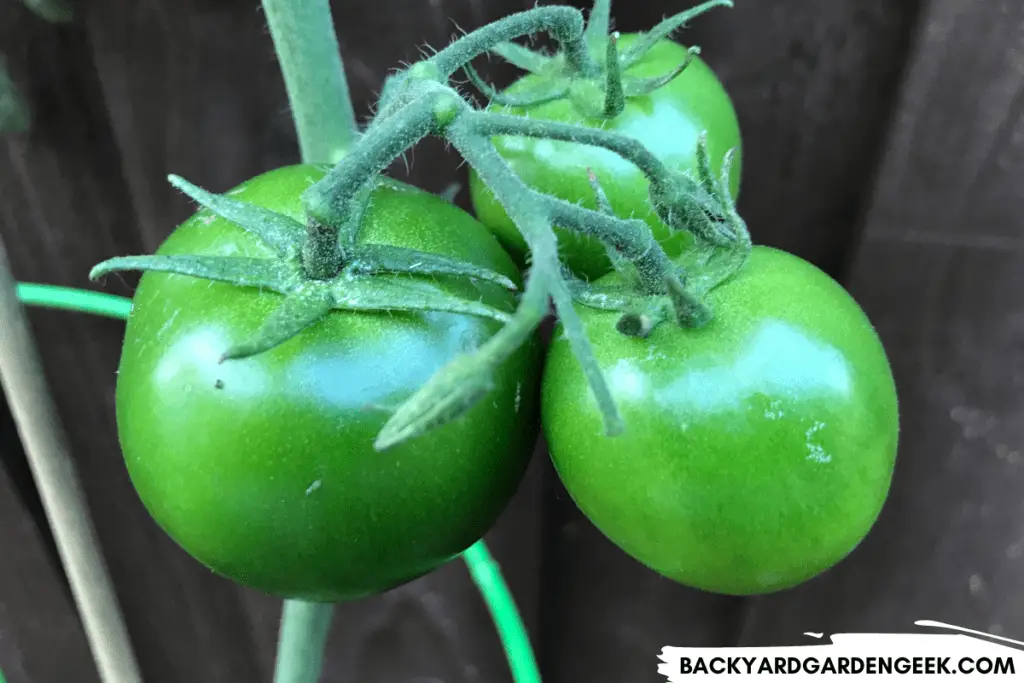
What Happens If You Plant Tomato Seeds from a Hybrid? My (Failed) Tomato Experiment
I purchased Kumato tomatoes at a Trader Joe’s some time back because I thought they looked interesting and wanted to give them a try. Sure enough, they were pretty tasty, so I decided to save the seeds even though I knew these were hybrid tomatoes.
At this point, I simply used the same process I always use when saving tomato seeds:
- I first scooped them out of the tomatoes, then put seeds and gel alike in a glass of water to sit overnight.
- The following day, I poured the glass of water and all of its contents into a metal strainer and sprayed everything thoroughly with a kitchen sink sprayer, rubbing the seeds around with my finger to loosen up and remove as much of the gel as possible.
- I then placed the seeds on a paper plate and spread them out evenly, letting them sit out to dry for the next 3-4 days.
- Once I did this, I placed all of my seeds in small paper seed envelopes and stored them in photo storage cases. I’ve tried many different storage methods over the years, but I think that paper seed envelopes and photo storage cases are the absolute best when it comes to storing seeds.
When the next growing season rolled around, you probably know what happened: I planted my seeds in a planting mix while things were still cold outside, then placed my seed planting containers on top of a heat mat and under grow lights.
When the seedlings started to form, I got pretty excited since I had no idea what was going to happen in the coming months. Perhaps unsurprisingly, the seedlings looked like any other seedlings, and the plant grew as expected.
So far, so good.
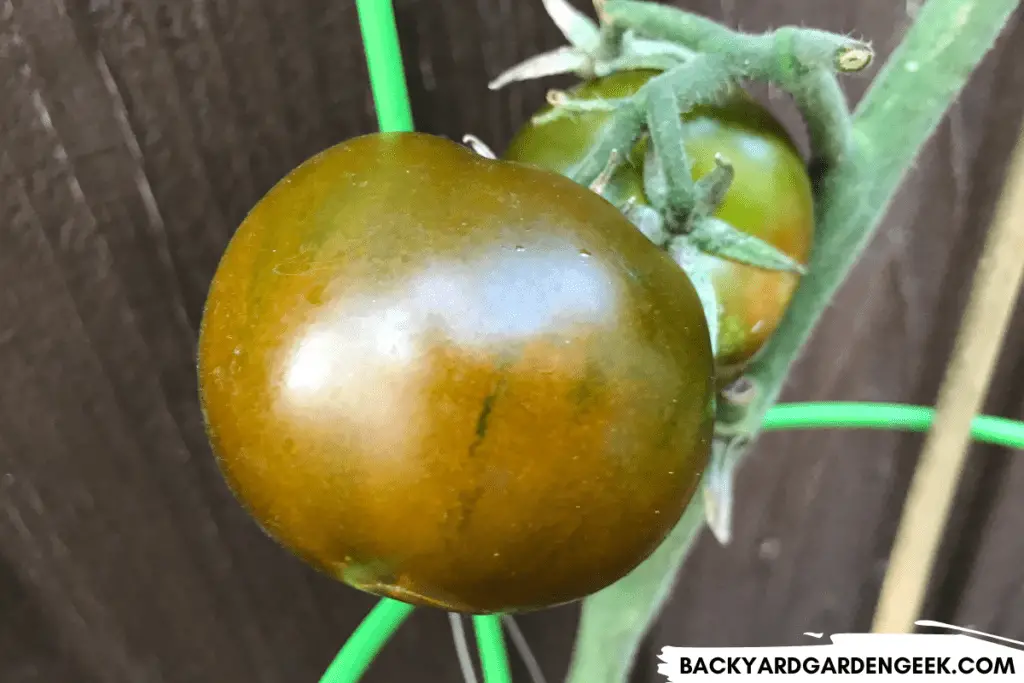
When the fruit began to develop, my excitement increased because the tomatoes were looking great, especially as the green fruit started slowly showing brown colors that are typical of Kumato tomatoes.
The fruit ripened much slower than my other tomato varieties, but this could have been due to the hybrid seeds I was using or the Texas heat (or both).
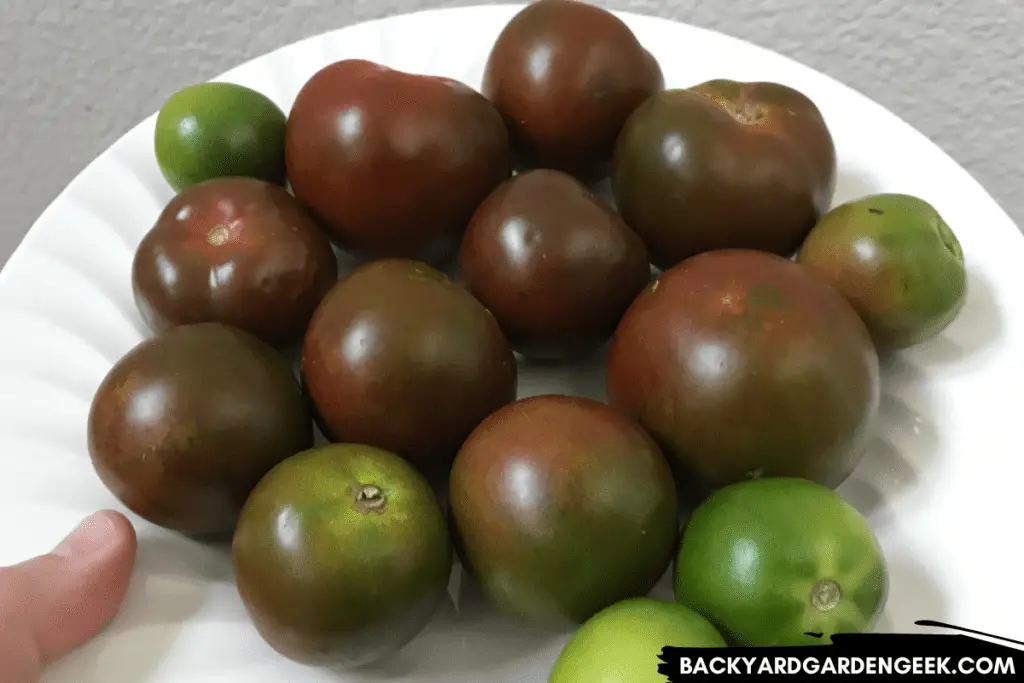
Finally, after waiting weeks for the fruit to ripen, I saw several tomatoes that were ready to pick. Before prepping my favorite summer tomato dish (a caprese salad), I sliced one of the newly-picked tomatoes and took a bite.
To my great disappointment, it was tasteless. As tasteless as a cheap store-bought tomato. As bland as the tomatoes they serve at fast-food restaurants.
Simply put, it looked like a Kumato, it smelled like a Kumato, but it wasn’t a Kumato. It was a look-alike variant of a Kumato that had everything going for it except the most important thing: flavor.
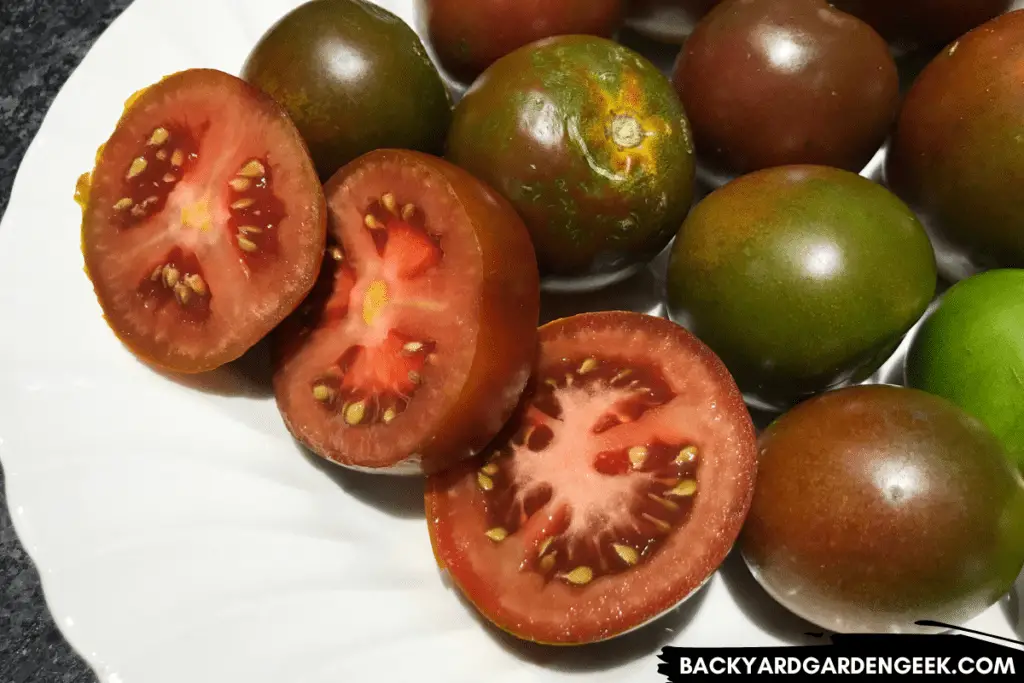
To be clear, this does not mean that seeds harvested from hybrid plants will always produce tasteless tomatoes.
What this means is that it’s an experiment with no guarantees. You literally never know what you’re going to get.
This is why I only recommend harvesting seeds from hybrid tomatoes if a) you’ve got room in your garden for an experimental plant, b) you enjoy the experimental process, and c) you like surprises, even when things don’t go your way.
If this is you, then I think you should absolutely harvest seeds from hybrid plants.
Sure, you might produce a dud like my Kumato variant. But you might also grow something that’s tasty and truly unique.
You can’t know until you try!
Hybrid Tomatoes: Are They Better or Worse Than Heirlooms?
As I noted above, hybrid tomatoes and heirloom tomatoes have distinct differences since the former are often bred for pest and disease resistance or for commercial shipping.
However, this isn’t always the case. In fact, there are hobby breeders all across the world who are breeding new tomato varieties each year, and most of these tomatoes are hybrid tomatoes since they don’t meet the requirements to be considered heirlooms.
But many of them are also delicious since they’ve been bred for taste, color, and texture, often by people who care deeply about tomatoes (instead of corporations who care mostly about disease resistance and commercial shipping).
Take Victory Seeds, for example. They have a section of their website devoted to selling tomato varieties that have been created by members of the Dwarf Tomato Project, garden hobbyists who are creating new dwarf tomato varieties for people who want to grow tomatoes but don’t have a lot of space.
In fact, there are so many different hybrid tomato varieties out there that it would take most people years, if not decades, to grow every single variety that’s available.
This is why I don’t like it when bloggers make overly simplistic comparisons between heirloom and hybrid tomatoes. There are just so many new varieties out there, if you know where to look and you’re willing to experiment.
So unless someone’s conducted a bona fide taste test competition featuring dozens of heirlooms paired off against dozens of hybrids (like the kinds you’ll find on the websites above), I don’t buy the heirlooms-are-alway-better argument.
Of course, heirloom tomatoes are often fantastic, but there are just so many tomato varieties out there–and so many of them are hybrids that have only recently made it to market–so I’m as excited to try them out as I am to grow my favorite heirlooms.
And who knows, maybe I’ll experiment again sometime soon by harvesting the seeds from one of my hybrid plants.
More About Tomatoes
If you’ve enjoyed reading about hybrid tomatoes, you might be interested in these related articles:

